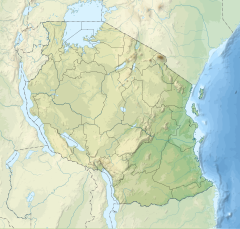Amani Nature Reserve
| Amani Nature Reserve | |
|---|---|

|
|
| Type | Nature reserve |
| Location | Tanga, Tanzania |
| Coordinates | 5°05′S 38°40′E / 5.083°S 38.667°ECoordinates: 5°05′S 38°40′E / 5.083°S 38.667°E |
| Area | 8,380 ha |
| Created | 8 May 1997 |
| Operated by | Forestry and Beekeeping Division, Ministry of Natural Resources and Tourism |
| Website | www |
The Amani Nature Reserve is a protected area located within the Muheza and Korogwe Districts in the Tanga Region of Tanzania, in tropical East Africa.
The nature reserve was established in 1997 in order to preserve the unique flora and fauna of the East Usambara Mountains. The East and West Usambara Mountains are a biodiversity hotspot. The Amani Nature Reserve includes tropical cloud forest habitats.
The Amani Nature Reserve was established in 1997 in a forested area in the East Usambara Mountains with an area of 83.8 km2 (32 sq mi), including the Amani Botanical Garden of 3 km2 (1.2 sq mi) and a further 10.7 km2 (4.1 sq mi) of forest managed by local tea estates. Traditionally, people living in villages adjacent to the reserve have used the forest as a source of timber, firewood and medicinal plants, a place to gather plants, bush meat, honey and fruit for consumption and a source of live birds, amphibians, reptiles and invertebrates for international trade.
The forests in the reserve have been described as intermediate evergreen forests or submontane evergreen forest, a type of vegetative cover that tends to grow on the seaward side of both the West and East Usambaras. The dominant trees are Allanblackia stuhlmannii, Isoberlinia scheffleri, Macaranga capensis, Cephalosphaera usambarensis, Myrianthus holstii., Newtonia buchananii and Parinari excelsa.
A growing problem in the area is the presence of the invasive West African tree Maesopsis eminii. This tree germinates readily from seeds which are spread by birds, springs up in gaps in the canopy and outperforms native tree seedlings, displacing rare endemics and reducing biodiversity. The forests of East Usambara have long been separated from other forests and their isolation makes them more vulnerable to invasive species such as M. eminii.
...
Wikipedia

